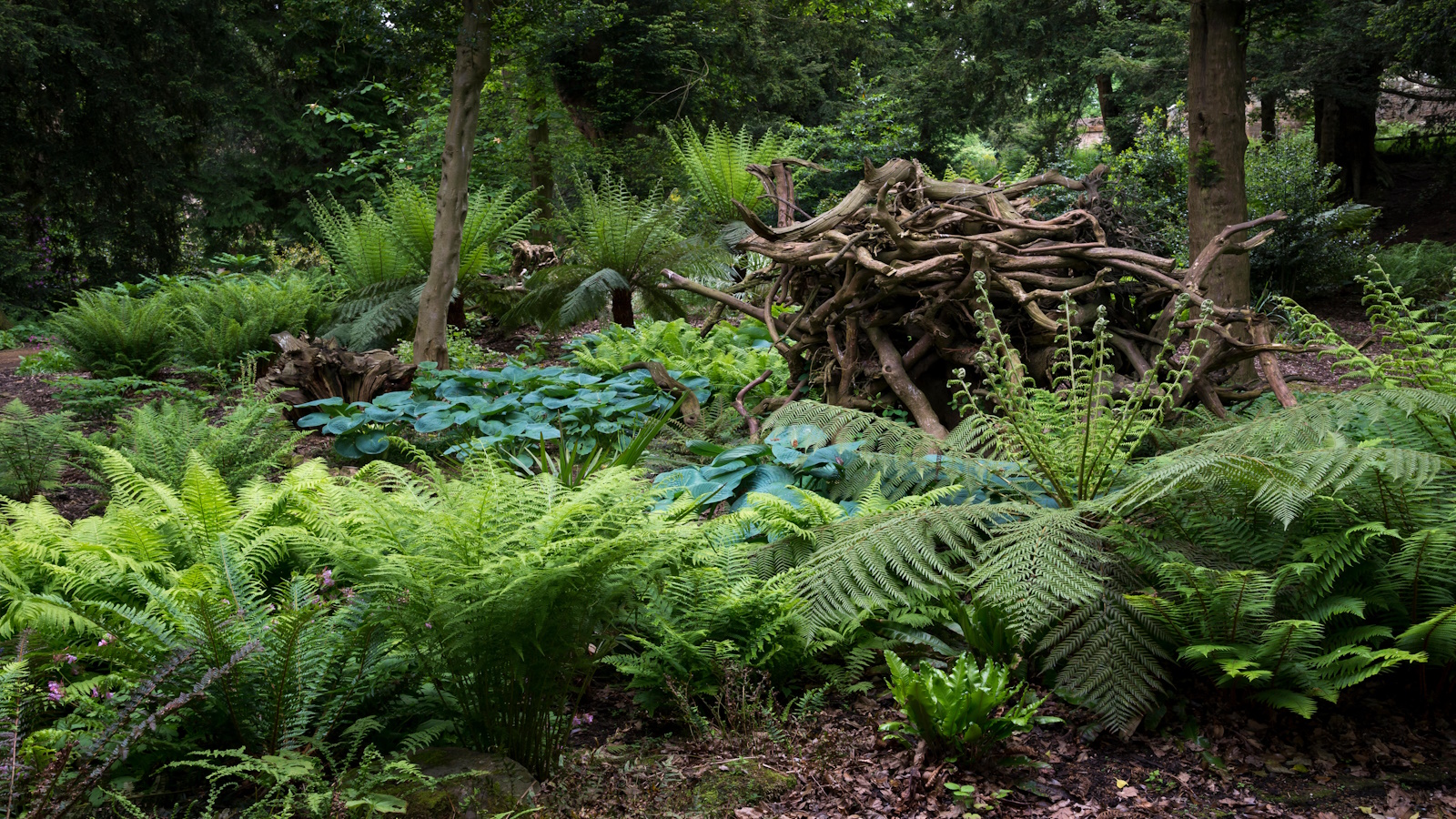
What is a stumpery? Popularized by the Victorians and adored by plant collectors and royalty alike, these intriguing features celebrate the natural beauty of the shadier side of gardening.
Hostas, ferns and other low-light loving perennials and bulbs nestle amongst upturned tree stumps - complete with exposed, sinuous roots - to create areas with a distinct, calming and other-worldly atmosphere. The perfect way to optimize a shade garden, in a spot where little else will thrive, it’s also quietly addictive with continual planting pockets calling out to be filled with new leafy treasures.
Besides offering a fun and decorative idea for a woodland garden, they are also the perfect solution for a notoriously tricky area as well as helping to significantly increase a yard’s biodiversity. Here experts share their ideas on how a stumpery can enrich your garden and provide a haven for wildlife.
How and where did stumperies originate?
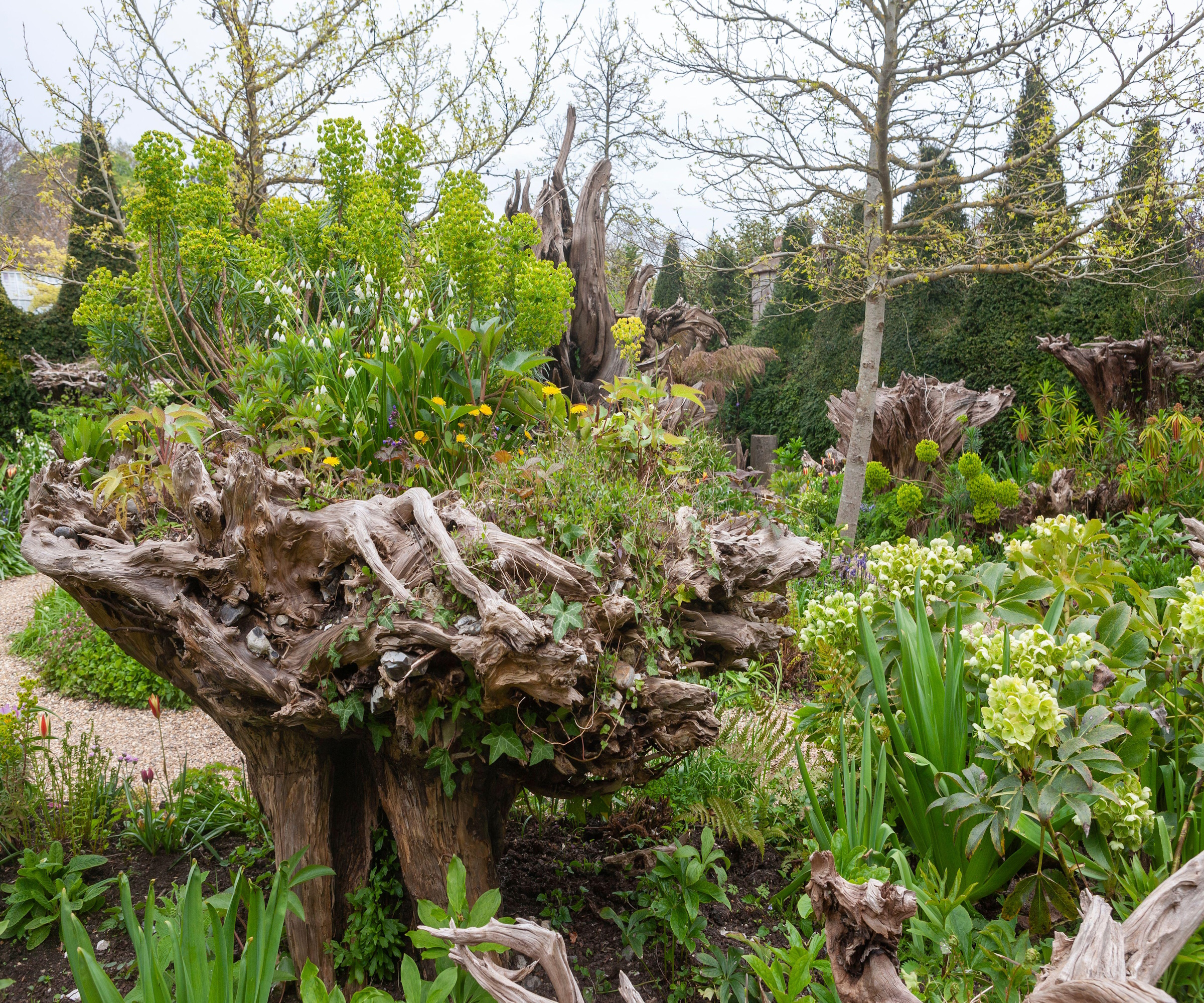
Partly born out of a Victorian fascination with ferns – coined as pteridomania – and a quest for more striking and exotic garden features, stumperies first appeared in the UK during the 1850’s. Described as a ‘rustic root garden’, the first example was created by James Bateman at Biddulph Grange, Staffordshire and included the exposed roots of majestic oak trees piled up to heights of 8 to 10 feet either side of a winding path.
Intermingled with scrambling ivy, virginia creeper, cotoneaster, and pockets of spring bulbs, hellebores and cyclamen, it proved a mesmerizing spectacle. Popular reviews led to other interpretations - including that at nearby Arley Hall, Cheshire - a year or two later.
Other notable UK stumperies include King Charles III masterpiece featuring the roots of 180 sweet chestnut trees from the Highgrove Estate, Gloucestershire, and the dramatic example at Arundel Castle, Sussex, created by Head Gardener Martin Duncan.
Examples in the US include the Rhododendron Species Botanical Garden in Federal Way, Washington; the Missouri Botanical Nursery completed in 2017; and, perhaps most remarkably, Steve and Cindy Bowhay’s towering Glacier Gardens where colorful blooms scramble over the upturned roots upended on trunks standing around 10 feet high.
Why build a stumpery in your yard?
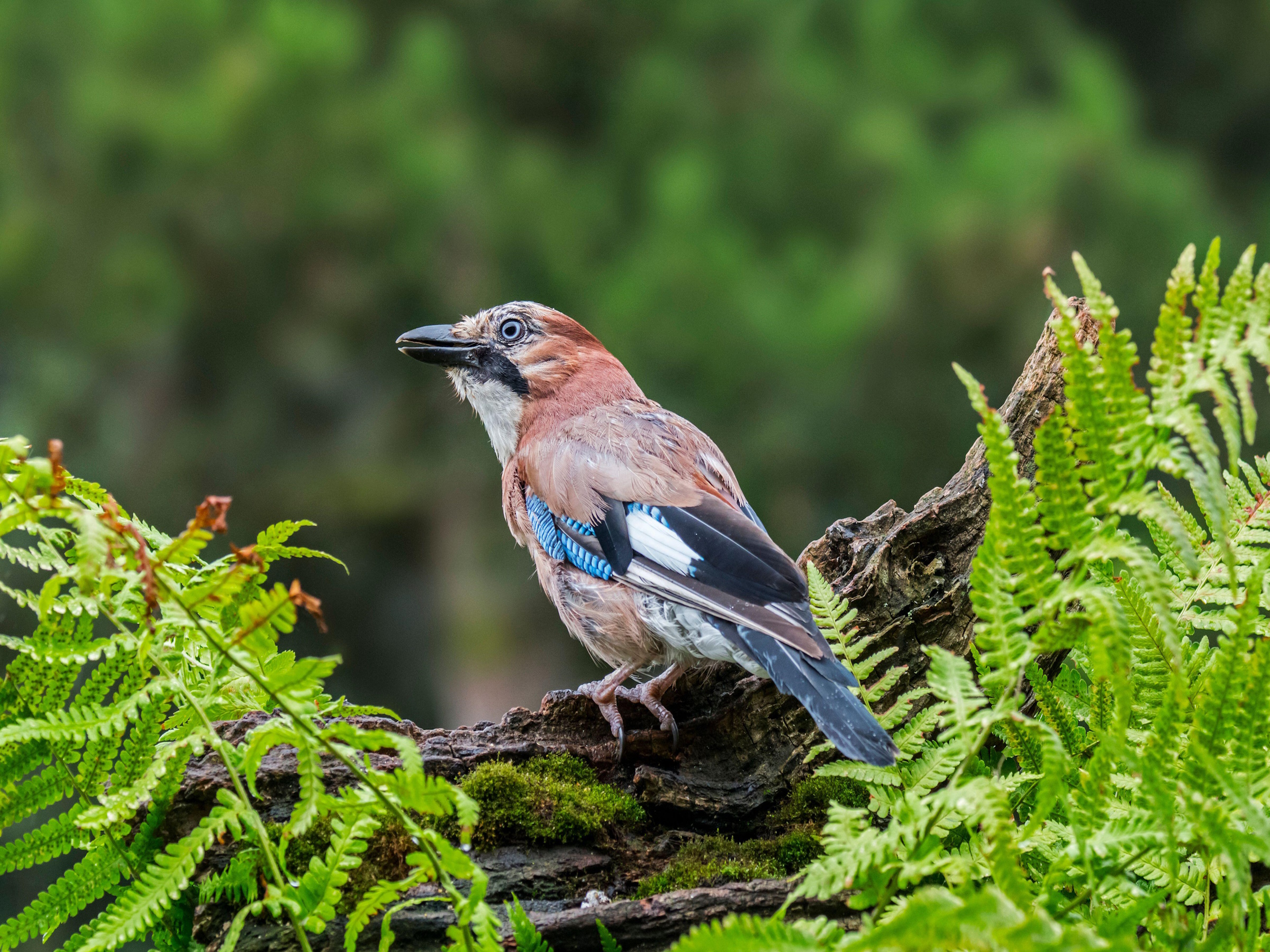
An effective way to introduce height, form and impact to a neglected shady or woodland area, stumperies are also a magnet for wildlife. Amphibians such as frogs, toads and newts will find respite in the damp, cool gaps between decaying logs and lush foliage while insects and beneficial pollinators will be attracted to the dead timber.
In turn, the presence of these smaller creatures will encourage birds and small mammals to visit, aiding improved plant pollination and natural pest control.
Leaving exposed tree roots, logs and branches undisturbed in gardens will encourage algae, lichen, moss and fungi to grow. Adding subtle color and texture, which develops and spreads over time, they provide essential food and shelter for many tiny insects. The formation of these slow-growing organisms will instantly create an aged feel and lend your plot a look of maturity which is very hard to replicate. Discover how to grow moss for an irresistible and fascinating addition to your planting.
How to create a stumpery
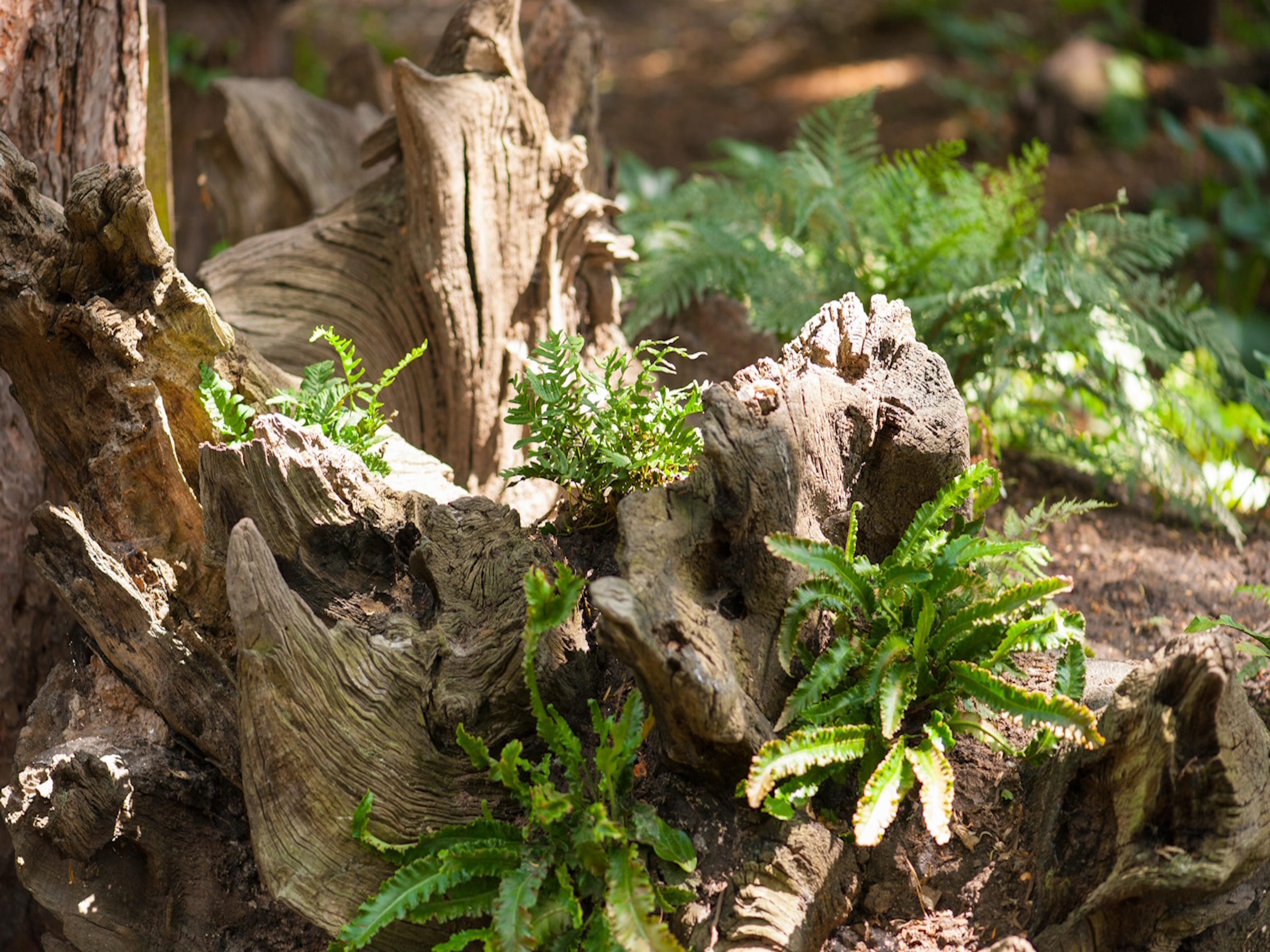
A shady spot below trees, or in the shadow of a wall or hedge, is ideal for transforming into a stumpery. First, decide on the layout and size of the feature, making sure to include areas where you can experience the organics structures and plants at close quarters. In small spaces, a couple of logs or a timber bench can be incorporated into a quiet seating area while in larger areas a winding pathway or planted bank can increase the levels of drama and intrigue.
‘Stumperys come in many forms from laying the stumps down to turning them upside down,’ says Judith Jones, founder of Fancy Fronds Nursery. ‘I am fortunate to live with a mix of mature conifers and deciduous trees of various ages. Many have senesced into stumps that host our native ferns and accept newcomers to the mix. Polypodiums are particularly happy to mingle with the native mosses.’
Tree stumps with exposed roots are key to building this garden feature and finding enough to have impact can prove a challenge. Tree surgeons and garden landscaping teams can help source suitable materials, but these can also be supplemented with easier-to-find logs and branches; the more sizeable, split, twisted and gnarled the better. Sweet chestnut, beech and oak are ideal candidates with their distinctive bark and woodgrain, plus, as hardwoods, they take time to rot down.
Before positioning the timber, prepare the installation area by digging down and loosening the soil. This will encourage insects and amphibians to take up residence as well as provide support for the uneven stumps. Take time to find the most pleasing arrangement and aim for plenty of planting pockets or nooks for wildlife.
Backfill around the edge of the stumps with soil, ensuring that each section is firmly in place. Line planting pockets with moss, adding a handful of grit for drainage, before filling with peat-free compost. Leave the stumpery to settle before planting with ferns and woodland plants.
Which plants work best in a stumpery?
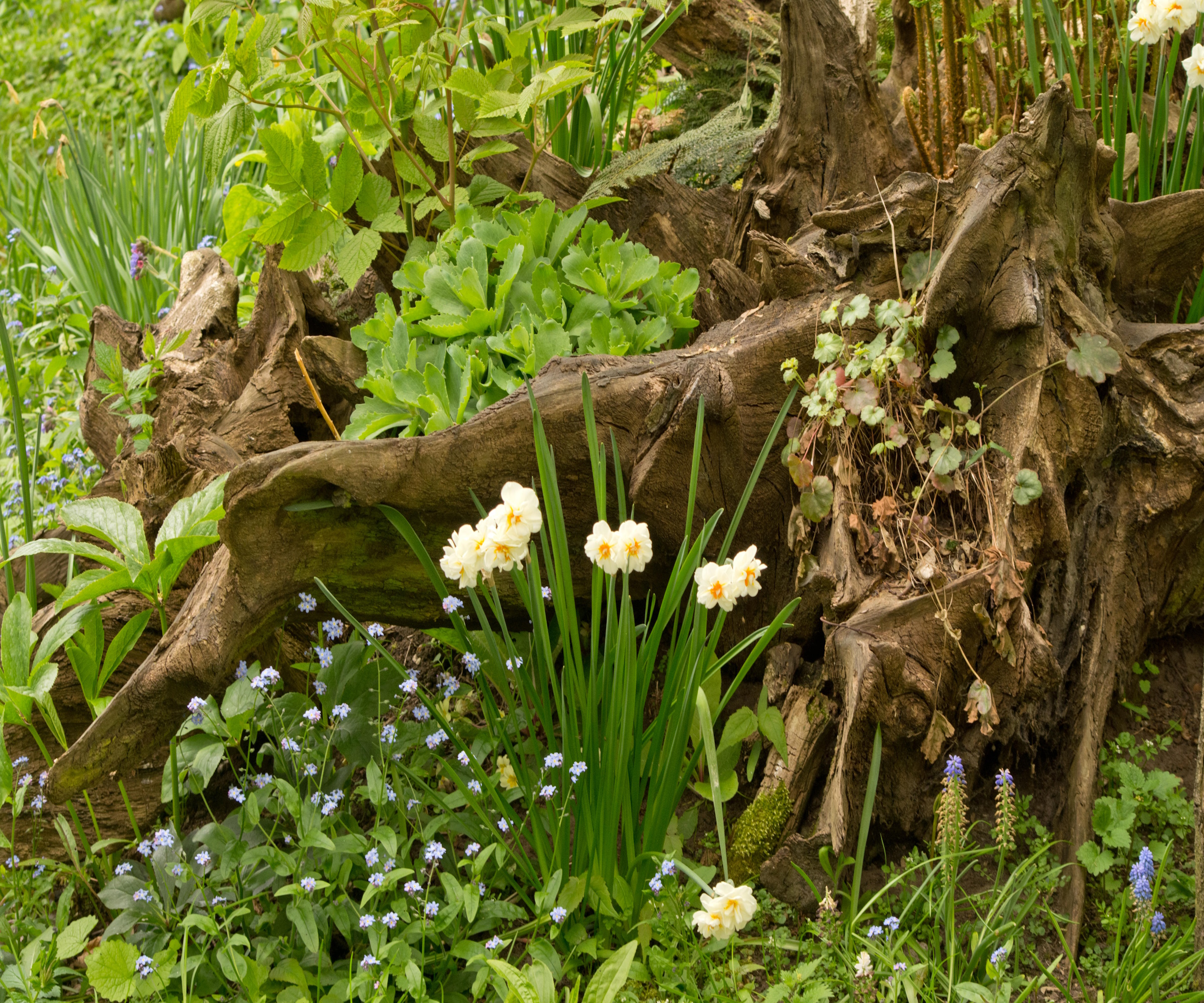
Woodland plants are the best option for a stumpery as they are specially adapted to suit low light levels and rich but well-draining soil. Depending on whether you are looking for decorative foliage, colored or scented blooms there’s plenty of choice.
Ferns are especially well adapted to live in dappled and full shade, and there’s a surprisingly wide selection of colors and intriguingly shaped foliage to choose from. From upright shuttlecock ferns to low-sprawling varieties, these plants are resilient and ideal for creating a backdrop ideal for showcasing delicate blooms such as wood anemones, cyclamen, aconites and epimedium.
‘Polypodiums are particularly happy to mingle with the native mosses, while the Dryopteris affinis complex offers an amazing array of choices from impressively large to charmingly dwarf. They are nearly evergreen in mild winters,’ continues says fern expert, Judith Jones. ‘Dryopteris filix-mas species offer an equally unique selection of cultivars but are sub-evergreen, slowly going dormant in the fall.’
She also adds, ‘There are many growers who attach trade names to these age-old named selections which can be confusing. The best way to learn about these marvelous ferns is to check out the British Pterodological Society.’
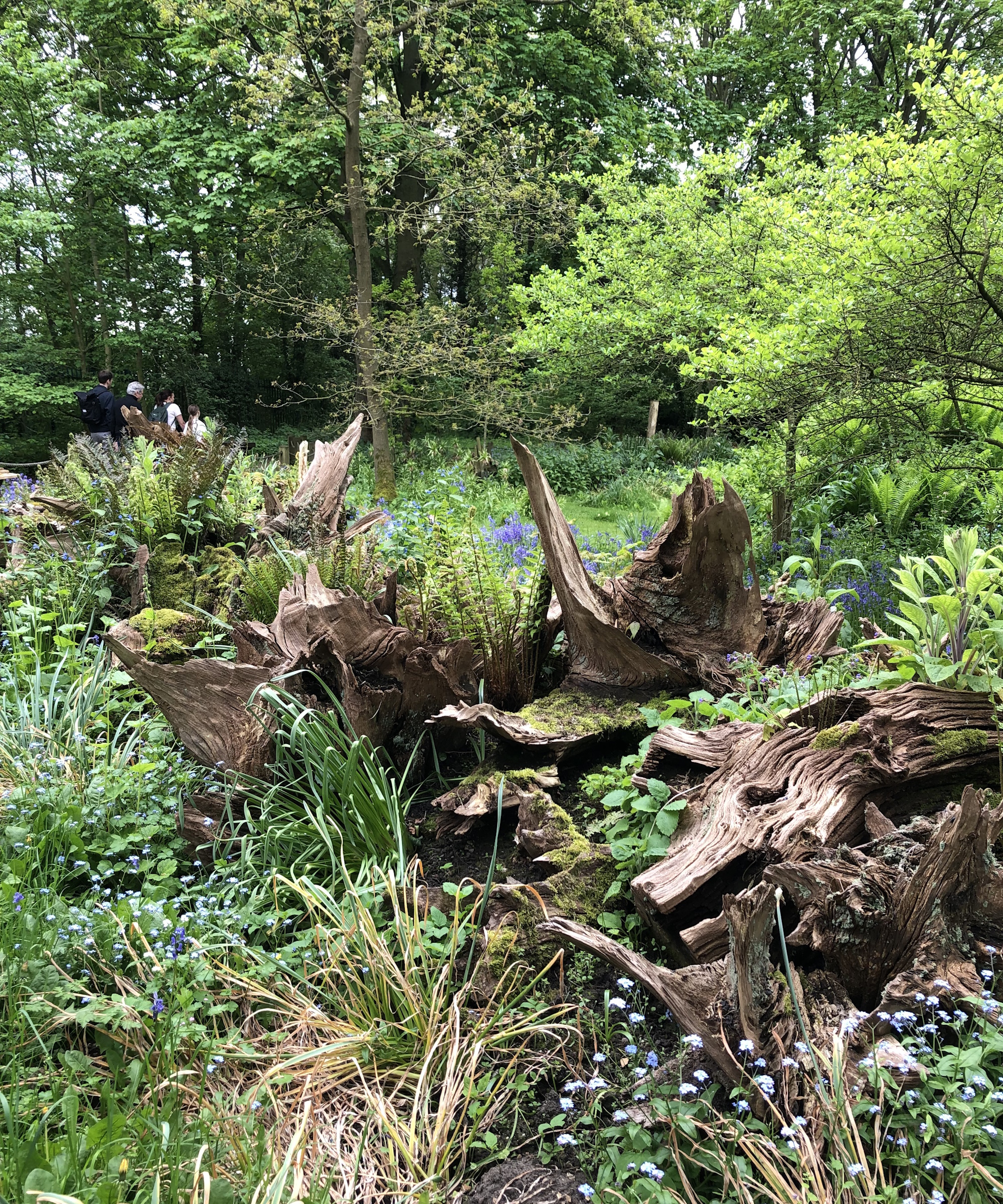
Leafy perennials such as hostas are brilliant for adding drama to shade and woodland gardens. Check out the hostas available at Burpee for a wide selection. Owner of hosta specialists Pine Forest Gardens, Richard Jolly says, ‘Hostas are great for softening the bed borders and the edges of pathways, helping to create a more natural, forest-like landscape.
'We love using mini and small hostas for this. They add lots of interest and texture while not blocking the plants behind them.’ He also suggests to take advantage of the wide spectrum hostas cover. ‘Much of what we can grow in deep shade comes in hues of blue, green, and maroon. Masses of brightly colored golden or variegated hostas can help brighten up these spaces and add contrast. It’s a good idea to include repetitions of the same variety.’
Bulbs are another dynamic and easy way to introduce color and texture into a shady area. 'I love incorporating bright yellow flowers into woodland gardens,' says horticultural expert Peggy Anne Montgomery. 'They have a magical way of capturing and reflecting the sunlight, bringing glimmers of light to the entire garden. With their cheerful yellow blooms, daffodils are the quintessential woodland flowers for this very reason.'
Another gem in the woodland garden is the woodland tulip, Tulipa sylvestris available from Dutch Grown. Peggy Anne explains, 'This botanic tulip boasts relatively large yellow flowers for its size, which are clear and bright yellow. They have the remarkable ability to perennialize, returning year after year. Plant as many as you can, and you'll be rewarded with their surprisingly sweet fragrance, adding another enchanting touch to your woodland haven.'
For more woodland planting suggestions be sure to check out the best plants for shade along with the best spring flowers for shade.
FAQs
Where is the best place in the yard for a stumpery?
Building a stumpery is a great way to liven up a dark, shady corner under trees, near a dense hedge or in the shadow of an outhouse or garage. Usually a spot where few plants will grow, using the striking but natural framework of tree stumps, exposed roots and twisted branches to showcase a carefully chosen array of delicate ferns, woodland bulbs and perennials can create a magical garden feature.
Use these natural forms to create height and drama by upturning tree stumps and stacking them on their sides or upside down. Alternatively artfully arrange and layer sizeable branches to build ribbon-like divisions between trees and borders or to edge informal pathways.
If you now feel inspired to discover more about woodland loving plants such as foxgloves, hostas and ferns then be sure to check out these shade garden ideas too.







